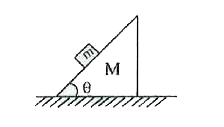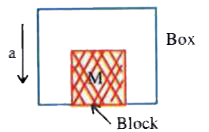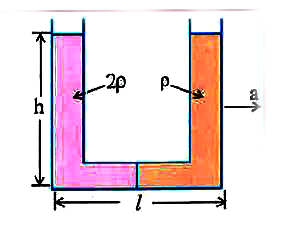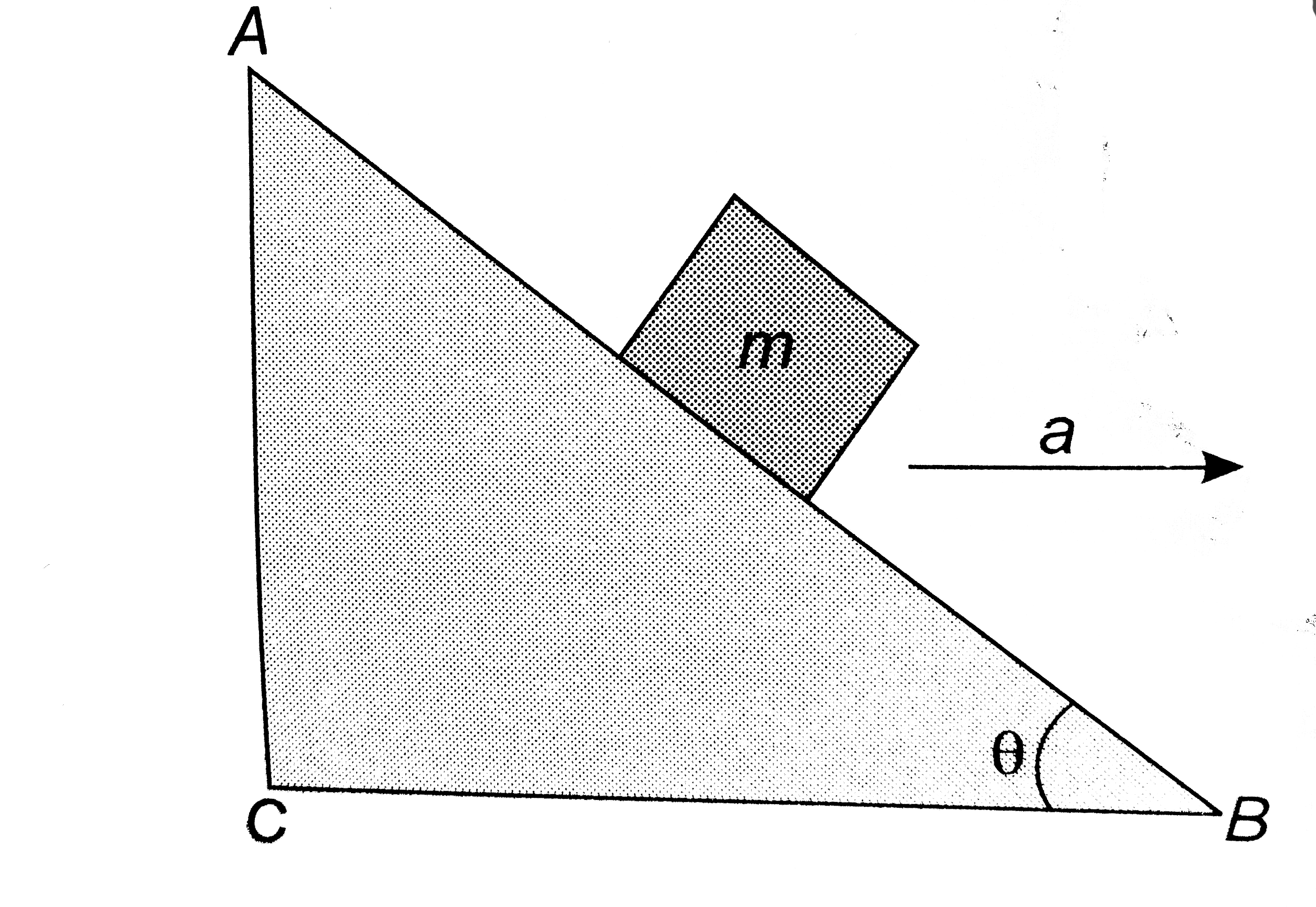A block of mass m is placed on a wedge of mass M. Coefficient of friction between them is μ>cotθ. The minimum acceleration of the wedge at which block appears stationary relative to wedge is
 Solution in Telugu
Solution in Telugu
g(sinθ−μcosθ)cosθ+μsinθ
g(sinθ+μcosθ)cosθ−μsinθ
g(cosθ+μsinθ)sinθ−μcosθ
g(sinθ+μcosθ)
The correct Answer is:A
Step by step video & image solution for A block of mass m is placed on a wedge of mass M. Coefficient of friction between them is mu gt cot theta. The minimum acceleration of the wedge at which block appears stationary relative to wedge is by Physics experts to help you in doubts & scoring excellent marks in Class 11 exams.
Updated on:21/07/2023Topper's Solved these Questions
- FRICTION BOOK - AAKASH SERIESCHAPTER - FRICTION EXERCISE - ADDITIONAL PRACTICE EXERCISE PRACTICE SHEET (ADVANCED) (MORE THAN ONE CORRECT ANSWER TYPE QUESTIONS)
1 Videos
- FRICTION BOOK - AAKASH SERIESCHAPTER - FRICTION EXERCISE - ADDITIONAL PRACTICE EXERCISE (LELVL-II) (LECTURE SHEET (ADVANCED)) (LINKED COMPREHENSION TYPE QUESTIONS)
2 Videos
- FLUID MECHANICSBOOK - AAKASH SERIESCHAPTER - FLUID MECHANICSEXERCISE - Questions for Descriptive Answers
14 Videos
- GAUSS.S LAW BOOK - AAKASH SERIESCHAPTER - GAUSS.S LAW EXERCISE - PROBLEMS (LEVEL - II)
12 Videos
Similar Questions
if the man can move with maximum acceleration a1anda2 relative to the trolley car in forward and backward directions, respectively then :
View SolutionWith what acceleration 'a' should a box descend so that a block of mass M placed in it exerts force Mg/4 on the floor of the box?

View SolutionA U-tube of base length I filled with same volume of two liquids of densities ρ and 2ρ is moving with an acceleration a on the horizontal plane. If the height difference between the two surfaces (open to atmosphere)becomes zero,then find height h

View SolutionA charge q is placed at the centre of the open end of a cyclindrical vessel. Find the flux of the electric through the surface of the vessel.
View SolutionIn the adjoining figure, the coefficient of friction between wedge (of mass M) and block (of mass m) is μ.
Find the minimum horizontal force F required to keep the block stationary with respect to wedge.

View SolutionThe coefficient of friction between the block A of mass m and the triangular wedge B of mass M is μ. There in no friction between the wedge and the plane if the system (block A+ wedge B) is released so that there is no stiding between A and B find the inclination θ

View SolutionA block of mass m is at rest relative to the stationary wedge of mass M. The coefficient of friction between block and wedge is mu . The wedge is now pulled horizontally with acceleration a as shown in figure. Then the minimum magnitude of a for the friction between block and wedge to be zero is:
View SolutionA block of mass m is placed on a smooth inclined wedge ABC of inclination theta as shown in the figure. The wedge is given an acceleration a towards the right. The relation between a and theta for the block to remain stationary on the wedge is.

View SolutionA block of mass m is placed on the rough incline of a wedge of mass M and inclination α to the horizontal. Calculate the maximum and minimum acceleration that can be imparted to the wedge so that the block may remain stationary relative to the wedge. The coefficient iof friction between the block and the wedge is μ.
View Solutiona Block of mass m is placed on a wedge of mass M there is no friction between the block and the wedge .The minmum coefficient of friction between the wedge and the gound so that wedge does not move is,
View SolutionIn the adjoining figure, the coefficient of friction between wedge ( of mass M) and block ( of mass m) is μ.
Find the minimum horizontal force F rquired to keep the block stationary with respect to wedge

View SolutionCoefficient of friction between block of mass m and fixed wedge is mu = 0.5 . For what value of (m)/(M) frictional force between block of mass m and wedge becomes zero ?
View SolutionA block of mass m is placed on a wedge of mass M. Coefficient between then is μ<cotθ. The wedge is given an acceleration to its left. Find the maximum acceleration at which block apears stationary relative to wedge.

View SolutionA block is placed on a rough wedge.The block will be stationary relative to wedge if acceleration of wedge a is?
View SolutionA block of mass m is placed on a smooth inclined wedge ABC of inclination theta as shown in the figure. The wedge is given an acceleration 'a' towards the right. The relation between a and theta for the block to remain stationary on the wedge is
View Solution
